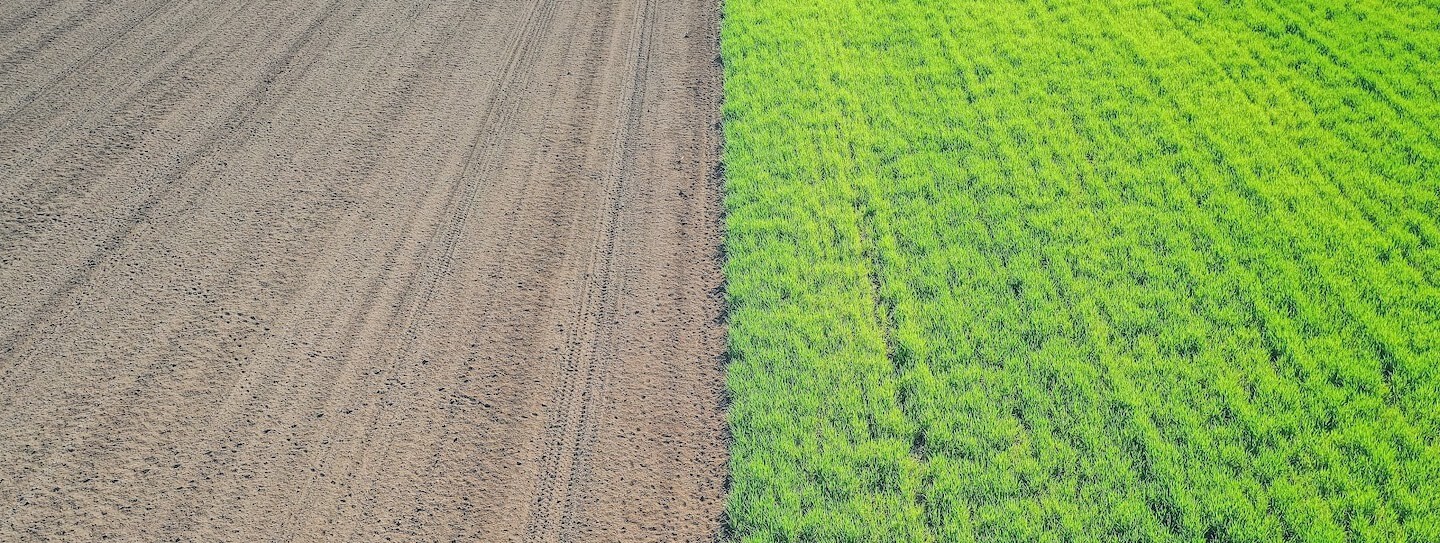Why is soil important?
Soil is vital to life on Earth. It fulfils a multitude of roles for us and is the cornerstone of agriculture: it stores water, acts as a water filter and provides the essential nutrients, oxygen and root support needed for plants and crops to grow.
What is the composition of the soil that nourishes us? Soil contains air, minerals, water, gas, soil organic matter (i.e. carbon, nitrogen and phosphorus), and a multitude of living organisms. These microorganisms play a key role in nature’s nutrient cycling. They break down organic compounds from plants and animal tissues into simpler compounds that can then be absorbed by plants. Other soil bacteria convert atmospheric nitrogen into mineral nitrogen, which is a vital plant nutrient. A teaspoon of topsoil typically contains a large variety of species of microorganisms, such as bacteria, fungi, microalgae, archaea and protists. In the soil, micro-organisms form assemblages from different species that co-inhabit the same environment and interact, they are known as microbial communities.
Presence of glyphosate in our soils
A 2017 study showed that glyphosate contamination was common across EU top soils. An analysis of top soils from eleven European countries and six different crop systems found glyphosate and or the main metabolite of glyphosate, aminomethylphosphonic acid (AMPA), in 45% of the samples. Similarly in France, a recent study (Pelosi et al., 2022) showed that in arable land, glyphosate contamination is common in soil but also earthworms, indicating that glyphosate is absorbed by soil biota. Glyphosate was detected in 88% and AMPA in 58% of the soil samples, and in 74% and 38% of the earthworm samples, respectively.
How glyphosate-based formulations threaten soil health
Glyphosate is not only a herbicide but also an anti-parasite with certain antibiotic effects. Several studies have shown that glyphosate-based formulations affect the composition and abundance of certain microbial communities in the soil, such as those that develop in the soil zone surrounding the plant roots (rhizosphere-associated bacterial communities) (Druille et al., 2013; Newman et al., 2016; Zaller et al., 2014; Helander et al., 2018). This is not to be taken lightly. Microbial communities support many vital functions for ecosystems, including the decomposition of soil organic matter and their conversion to microminerals and plant nutrients (nutrient cycling), which ultimately boosts plant health and improves crop production. Their diversity and abundance are essential for soil health, and thus for food production.
Additionally, the application of glyphosate formulations causes an increase in the colonisation of specific plant pathogens on plant roots (known as a specific Fusarium species). These pathogens can release mycotoxins, which might lead to increased risks for food safety.
Glyphosate has also been demonstrated to be toxic to certain soil bacteria of the Bacillus and Pseudomonas families, which have an important role in making soil minerals available to plants, and in suppressing specific pathogenic fungi. (Yu et al., 2015; Aristilde et al., 2017).
As glyphosate is harmful to earthworms, decreased earthworm activity leads to even more unhealthy and less productive soils. It has been shown that in glyphosate-treated soils the weight of earthworms (Eisenia foetida) can be reduced by 50% (Correia & Moreira, 2010).
Finally, glyphosate and its metabolite AMPA can get adsorbed in soils and persist for longer periods, depending on the clay content and climatic conditions. Glyphosate getting adsorbed in clay can slow down the nutrient cycling of soil microorganisms, influencing in this way the physiology of plants and their interaction with the environment (Kanissery et al., 2019).
Resources
Articles :
Générations futures (2021) : Le chlordécone « refait surface » aux Antilles françaises à cause de… l’usage de glyphosate. Explications!
Politico (2019) : Concerns over glyphosate pass from human health to the soil
Futura Sciences (2020) : Interview : « Neuf plantes sur dix ne peuvent pas pousser dans des sols ordinaires sans l’aide des champignons », mentionne l’interaction entre les micro-organismes des sols, les plantes et les perturbations par les activités humaines, dont glyphosate.
The Independent (2022) : RoundUp: World’s most popular weed-killer linked to convulsions in animals for first time. Study on the impact of Gly exposure on worms, nervous system, convulsion.
Scientific research papers
L.H.S. Zobiole and al., “Glyphosate affects micro‐organisms in rhizospheres of glyphosate‐resistant soybeans” (Journal of Applied Microbiology 110(1) 2011).
Druille, M. et al., “Glyphosate reduces spore viability and root colonization of arbuscular mycorrhizal fungi”, (Applied Soil Ecology, 64, 2013).
Zaller, J. G. et al., “Glyphosate herbicide affects belowground interactions between earthworms and symbiotic mycorrhizal fungi in a model ecosystem” (Scientific Reports, 4(1), 2014).
Newman MM. et al., “Glyphosate effects on soil rhizosphere-associated bacterial communities”, (Sci Total Environ. 2016).
Aristilde, L. et al., “Glyphosate-Induced Specific and Widespread Perturbations in the Metabolome of Soil Pseudomonas Species” (Frontiers in Environmental Science, 5, 2017).
Helander, M. et al., “Glyphosate decreases mycorrhizal colonization and affects plant-soil feedback”, (Science of The Total Environment, 642, 2018).
Céline Pelosi et al., “Glyphosate, AMPA and glufosinate in soils and earthworms in a French arable landscape” (Chemosphere 301(10), 2022).
Naylor, D et al., “Trends in Microbial Community Composition and Function”, (Soil Depth. Microorganisms 2022, 10, 540).

